
This is the first half of a two-part special report whose topic was selected by the Brazilian Association of Education Journalists (Jeduca) in partnership with Itaú Social as part of the fourth edition of their Education Journalism Award. Read part two here.
With its proven effectiveness from an educational point of view, in Brazil hip hop has been undergoing a slow and gradual metamorphosis with regard to how this cultural movement is viewed from outside of the communities where it originated. Once identified as “thug” music, today it is generally recognized as a legitimate artistic expression and with a leading role in reflecting on class struggles. It is important to recognize that, as a weapon of social resistance, this cultural movement generates economic activity through poetry emphasizing personal life experiences.
In this two-part series we’ll dig into the hip hop movement’s origins as a collective artform responding to prejudice by exploring three projects with their own methodological approaches all based in Greater Rio de Janeiro’s Baixada Fluminense region—RapLab, from Instituto Enraizados, based in Comendador Soares, a suburb of Nova Iguaçu; and Lanatanpa Family and Cypher Kids, both from Duque de Caxias. They show how hip hop offers itself as a tool to change the structure of teaching and daily life in schools. We will also identify resistance to these possibilities.
Motivations and Narratives that Must be Heard
According to Brazilian psychologist and researcher Mariane Lemos Lourenço, hip hop “refers to a broad cultural set of qualities that includes music (rap), painting (graffiti) and dancing (break). Rap—an acronym for ‘rhythm and poetry’—is the musical form of the movement and is its most prominent element.” In Brazil, it emerged in the peripheries during the 1980s, becoming widespread in the following decade with the emergence of major national artists such as Racionais MC’s, Thaíde and DJ Hum, and RZO.
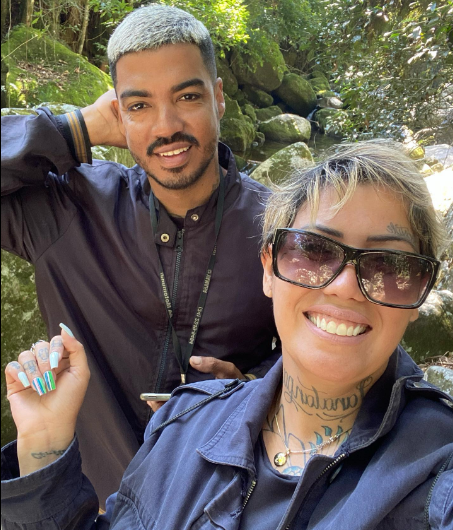
Referred to as urban narrators, rappers want to influence others with what they believe to be positive. They hold each other to the views and principles expressed in their lyrics. To a greater extent than meets the eye, rappers are agents of education and ethics.
Advising and influencing others may not have been the primary goal of tour guide Juliana Maia, who, together with her electrician husband Anderson Maia, created the Lanatanpa Family group. However, it is undeniable how much bringing people together is a natural attribute of rap and hip hop. The name of the group founded by the Maias—Lanatanpa—is an anagram of Pantanal, a neighborhood in Duque de Caxias where the initiative was founded and where the couple lives.
“The goal was to broaden the concept of culture and align it with the interests of local youth. After we had the first edition, in 2018, about 400 people gathered in the square in Morro do Sossego (an area neighboring Pantanal). When we saw that the initiative had been well accepted by residents, we started holding a rap battle every two weeks. We started gaining structure and content, and molding ourselves to the needs of the community. The idea was just to be a rap battle and a cultural group, but the project grew to take on other dimensions.” — Juliana Maia
She also says that the inspiration for founding Lanatanpa was the Knowledge Battle created by rapper MC Marechal which differs from traditional MC battles. Generally, in rap battles the winner is the one who comes up with the best attack verses, spoken over pre-recorded beats, as a way to test battlers’ freestyle and powers of improvisation, always in disrespect of the opponent. During the Knowledge Battle, however, besides rhymes and freestyling, there is a joint consideration of the participants to address complex and everyday issues such as human rights, violence, racism, education, and sexism.
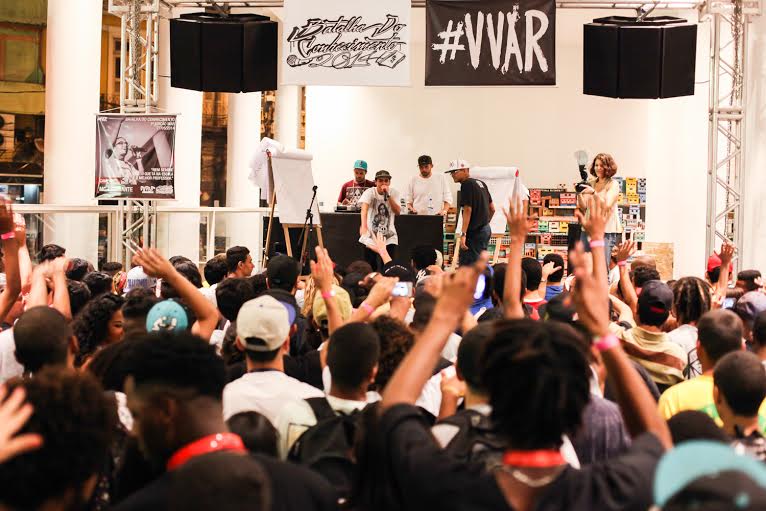
According to the same article by Mariane Lemos Lourenço, hip hop is “an artform that is born from exclusion, from the lack of access to other means of entertainment such as clubs, cinemas, theaters. It is an art that entertains and also informs, that brings knowledge. The art of the hip hop movement works as an instrument of mobilization—maybe the only one these young people have access to.”
This perception speaks to the Maias’ motivations for founding the Lanatanpa Family:
“We realized that friends and relatives here were interested in going [to hip hop events] but couldn’t afford to attend a battle that took place at the Rio Museum of Art (MAR). We used to take some teenagers, but [most] parents didn’t give permission, not to mention that the accessibility from here in Pantanal to Central do Brasil [train station, in the center of Rio] is complicated because you have to take two buses or catch a bus that costs R$7 [US$1.33]. We knew little about [rap] battles in the Baixada, since it’s made up of 13 cities and some of them are very far from each other, which means having the same difficulties [with regard to] transportation.
For the young people, we’ve wound up becoming an inspiration and model which they accept and listen to. They embrace the hip hop movement in their daily lives. They even tried to do a [rap] battle near here, but they had no credibility because they were teenagers. The residents didn’t respect what they were trying to do, no matter how much we were behind it, encouraging them. Because of these internal and territorial conflicts, we decided to make our plans for Lanatanpa a reality.” — Juliana Maia
On the School Yard: Africanness in Flow and Pick Ups
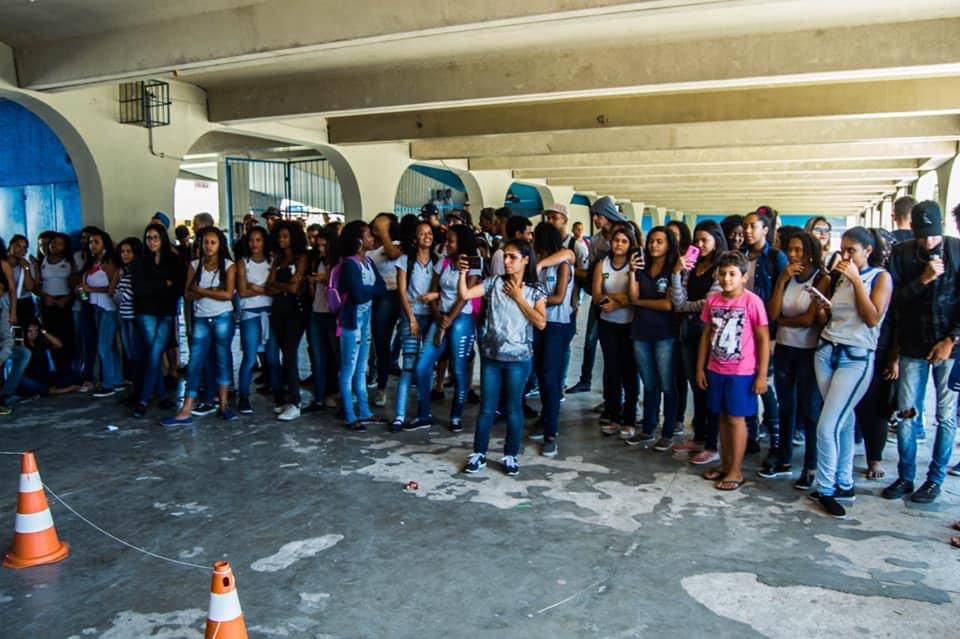
Juliana Maia highlights that the classroom environment in a public school is not suited to long-term learning outcomes because the educational system aimed at students from the periphery fails to recognize the subjective issues that affect the daily lives of these children and adolescents. According to Maia, this is not the time to create new rules, but rather to awaken other emotional potentialities in young people so they can realize their potential.
“Through this relationship with school, I believe we can draw students back in. If they’re very critical, we’ll work on empathy. If they like to attend classes, but are introverted, we’ll work on artistic expression. If they have problems with depression, we’ll form a support network. They need to feel as though this is geared toward them. The problem is that students could have everything at school, but the State has been dismantling public schools. People are tired, trying to survive. When the school proposes [an idea] for the student, they don’t want to do it or even discuss it. [The student] is fed up, has seen that same teacher since the fifth grade, and already holds a grudge against the principal. So, when a project comes to the school with a different pedagogical approach, many will want to participate. Lanatanpa is attractive [to them] because they see themselves [in it].” — Juliana Maia
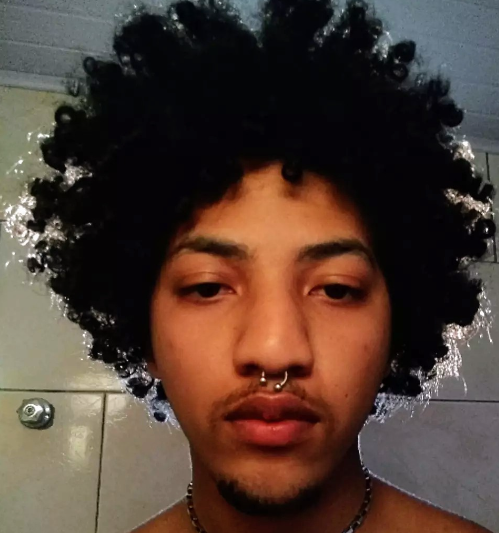
The first Lanatanpa activity in a school environment took place in 2018. The CIEP Clementina de Jesus School developed a series of activities related to Black Awareness Week, with four boys from Lanatanpa, among MCs and b-boys who went to school there. Levi de Oliveira—better known as DJ Levas—was one of these boys and stressed the importance of having hip hop at school.
“Everything happened very organically, nothing was overly planned. I didn’t really know that I was going to do it. The sociology teacher at the time wanted each 11th grade class to do a project on the topic. One week until the deadline, we still had no idea what to do. Then I thought: I’m part of a hip hop group. There’s nothing better to talk about than this culture, which has a whole historical and sociological context. All that was missing was how to present the idea. I went looking for Juliana, explained the whole deal with the project, and Lanatanpa was there. The group organized itself very quickly. There was group choreography and freestyle dancing. We set up the sound system, the pick ups (table where the vinyls are placed, and the DJ plays the sound effects that accompany the beats). It was very important for me, you know? Because my house has always been very musical, and we all came together within a school environment through music.” — DJ Levas
The following week, the Lanatanpa Family also went to CIEP Graciliano Ramos School, in Duque de Caxias, to develop another educational initiative. Since then, they have never stopped.
Wallace Oliveira—a researcher and teacher at CIEP Carlos Drummond de Andrade School, in Comendador Soares, a neighborhood in the Greater Rio de Janeiro municipality of Nova Iguaçu—states that projects such as the Lanatanpa Family contribute positively to what he calls “internalized scenario changes.” He says that “initiatives such as those produced by Lanatanpa end up providing students with a context of contact where they can interact, debate, express themselves, and build collectively. Students can often express what they feel through rhyme, poetry, and drawing (graffiti) when they [otherwise] cannot find a way to do this. In this context, a safe space can be built, where art acts as a great amplifier that allows anxieties and aspirations to be heard.”
The Rapper, Future Doctor
It is easy to understand why hip hop is not part of a robust strategic planning nor of the curriculum of peripheral schools, because there is little space in public schools to work on psychological issues which arise from the daily lives of those who live in low-income communities and subsequently cause various types of illnesses.
Flávio Eduardo Assis—a PhD student in Education at the Fluminense Federal University (UFF), better known as Dudu de Morro Agudo—is the creator of RapLAB, a hip hop project developed to produce a network of knowledge and help with the cognitive development of young people. RapLAB uses rap as an educational tool that allows for work on aesthetic subjectivity, group work, world reading, citizenship, democracy, and the concept of values, among other topics.
“I wanted to develop something that would be able to make a person who had never had contact with rap be able to experience the composition process, in a short period of time, so that it wouldn’t be tiring, so that the participants wouldn’t lose focus, and so that the activity could be done during school hours.” — Dudu de Morro Agudo
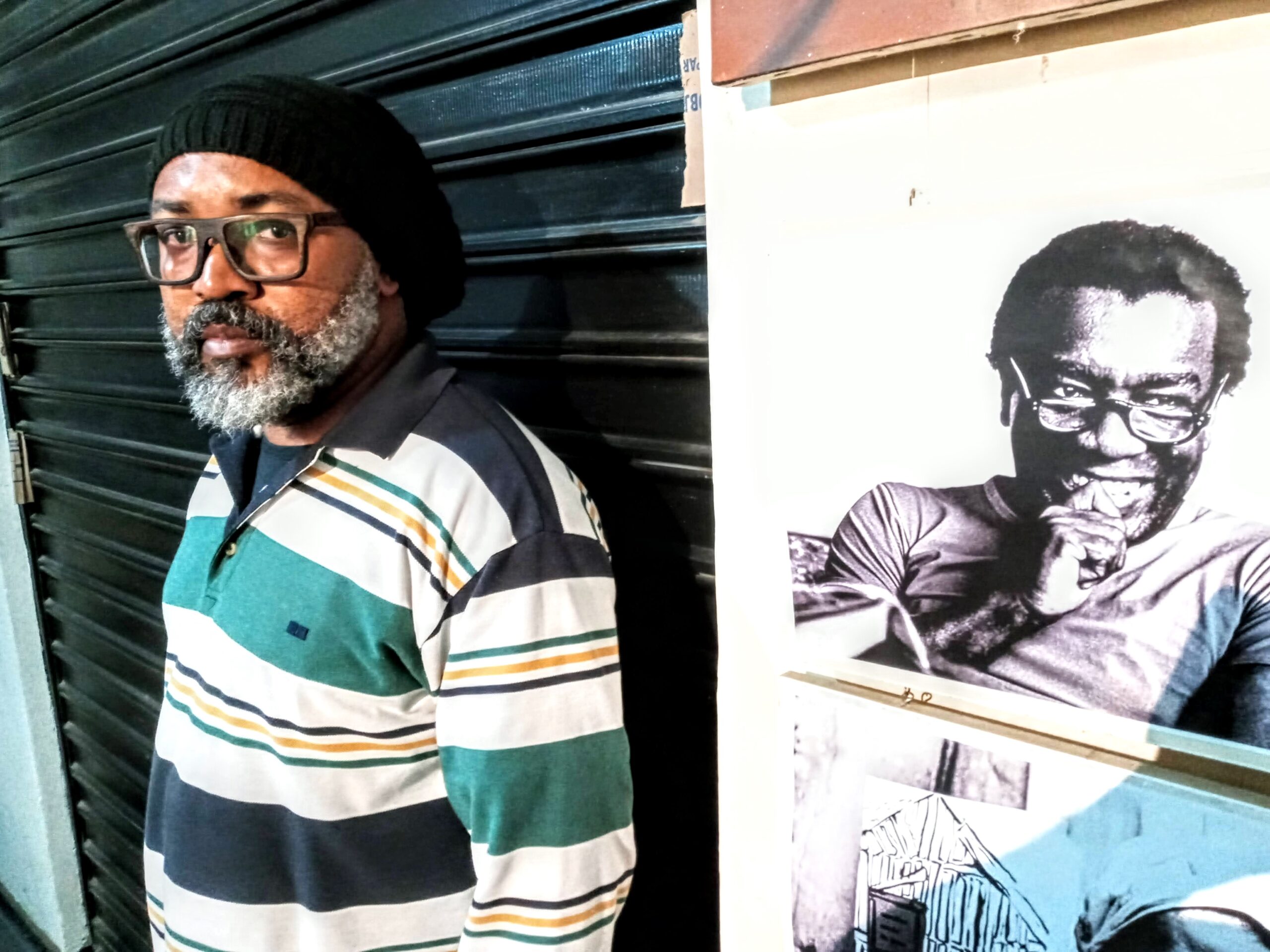
According to Dudu de Morro Agudo, the idea is to process information in a dynamic way and to develop reasoning, self-reflection, and introspection, as well as working on intellectual aspects. The idea is also to work with social issues, collective work, and respect for differences. He describes how RapLAB works in practice:
“It happens in four stages. A group of 20 people talk about any theme and from this conversation we enter a kind of game, a method that we create, choosing the ten words that stood out the most during the conversation. For example: it can be about structural racism, communist revolution, or even Naruto (a Japanese cartoon character). They will discuss their lived experiences in relation to this word. By choosing the ten words—which we call guiding words—to help in the writing process, a review of this conversation is achieved.
One of the participants will take one of these words and construct a sentence that has to do with what was discussed. This participant cannot rhyme. Then, another word is chosen by another student, and another sentence is constructed that uses the first guiding word and that rhymes in the sequence. With the construction of eight rhymes with 16 lines, this stage is complete. Then the music and rhythm stage comes, and finally, after everything is well rehearsed, comes the recording stage. This is divided into two stages: a choir, so that everyone can participate, even the shy ones, and then, those who want to record their voices individually go to the studio. My team takes care of the mixing and production. Everything is recorded on a pen drive.” — Dudu de Morro Agudo
Invade to Avoid Evading
Data from the Anísio Teixeira National Institute for Educational Studies and Research (Inep) show that the dropout rate in public high schools more than doubled in 2021. In 2020, the percentage of students who dropped out was 2.3%, while in 2021, the rate was 5.6%. In a different survey conducted by the Getúlio Vargas Foundation (FGV), the dropout rate was higher among students at the beginning of elementary school. This may be because during social isolation they were not able to physically go to school. The big problem was in the methods that schools adopted to maintain remote learning, given students’ lack of adequate access to technology.
School dropout rates have been a cause for concern in public schools in the favelas and peripheries for a long time, but the pandemic exacerbated the problem. Cleber Pacheco, a friend of Dudu de Morro Agudo and a geography and sociology teacher at the CIEP Nelson Rodrigues School in Comendador Soares, was alarmed by the high dropout rates in his own school. Dudu de Morro Agudo sought to help his friend and jumped in to explain how RapLAB’s approach worked. It was adopted immediately:
“So in that moment, rap came to be seen as something positive. It became the solution to an educational problem. [What makes our approach] unique is that we talk to the black youth in the neighborhood, you know? Who is dropping out of school? About 70% of school dropouts are black students.”
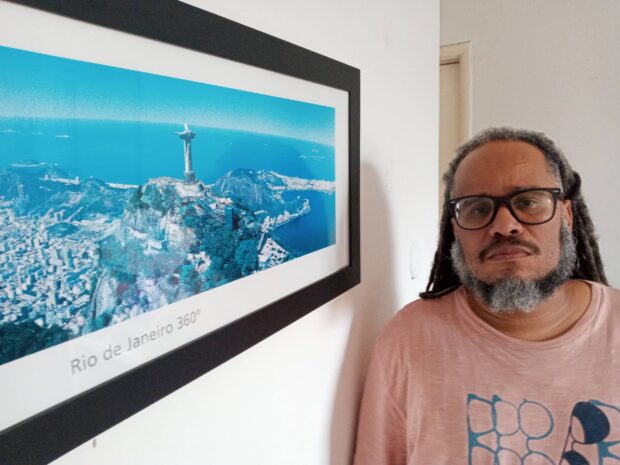
Students who hang out with teachers like Pacheco are often referred to as “unrecoverable” or “undisciplined.” For Dudu de Morro Agudo, this overlooks the reality of the situation. It reflects the sum of two inconsistencies: the lack of a new way of looking at certain student behaviors, combined with school guidelines which are considered outdated and fail to understand the complex nature of the decision some marginalized students make to leave school.
“There is still a lot of resistance within schools. There is resistance from the school management team. If there is a change in the administration, all the projects fall through. The students themselves are suspicious: ‘Come on, I never get anything from anyone, why do you want to give me something cool?’ Youth have a need to be listened to. They want to talk. The teacher has to learn to listen. I come, I talk, I get teased, then I tease too, but afterwards, at a certain moment, everybody is quiet, thinking, their minds frantically racing to make the rhyme. The silence is a victory, bro. It’s priceless.” — Dudu de Morro Agudo
He reinforces this idea by saying that many students had difficulty reading and writing, but that, through music, they revealed their true potential. He shares that once he forgot the lyrics of a rap he would use in class while at home. But when he got to class there was a “boy who [remembered and] reenacted the whole exercise, which was a rap about a frog that lived in a lagoon.”

Even so, the hip hop movement remains underutilized as a teaching tool in the classroom. Little by little, a culture born in the favelas and peripheries is gaining more and more credibility beyond just a source of leisure. Yet, even as it is recognized as a learning tool in the classroom, which develops subjectivity and new forms of social interaction among students and teachers through rhymes, graffiti, and dance, the use of hip hop in this way is not yet commonplace in Brazil’s public schools.
In general, public schools are still spaces of knowledge that, unfortunately, do not culturally or methodologically reflect the communities in which they are located. Low representation in the school environment causes high dropout rates and a lack of interest in relation to the content which is taught. Students need to see themselves in the form and content of classes. Feeling culturally and socially embraced is vital to revolutionize learning.
This is the first half of a two-part special report whose topic was selected by the Brazilian Association of Education Journalists (Jeduca) in partnership with Itaú Social as part of the fourth edition of their Education Journalism Award. Read part two here.
About the author: Fabio Leon is a journalist, human rights activist, and communications advisor at the Fórum Grita Baixada.
